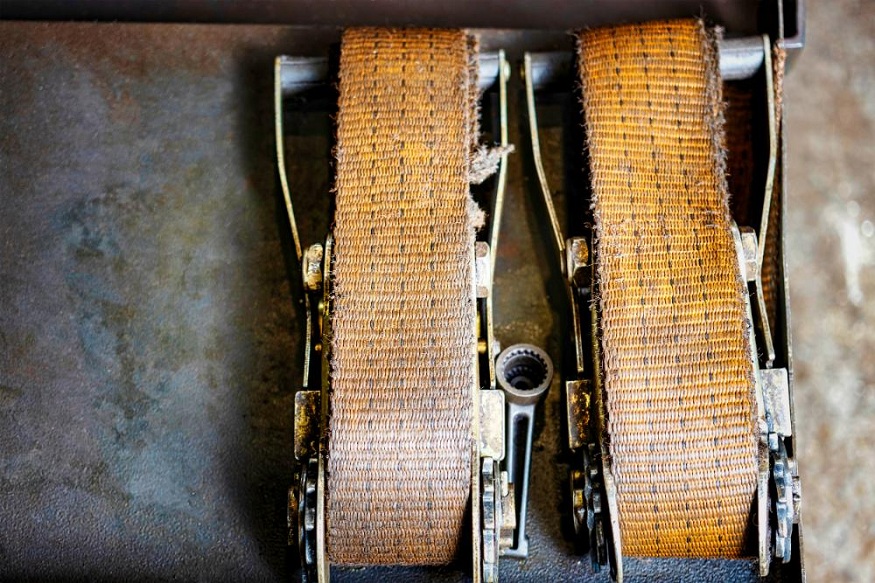Nylon webbing is an ideal material for tie-down straps because it is tough, resilient, and resistant to things like UV rays and temperature extremes. However, webbing material isn’t completely resistant to any and all damage. Things happen. Nylon webbing straps do get damaged. They do wear out and fall apart.
The makers of the Rollercam brand of cam straps recommend inspecting straps with every use. Below are six types of damage they say users should look out for. Damaged straps should never be used prior to being repaired. If the damage is severe enough, repairs may not be possible.
1. Excessive Abrasion
The most common type of damage to nylon webbing straps is excessive abrasion. It is normal with age. As webbing material makes contact with cargo, there is friction between the two. The friction causes abrasion wear and tear.
Excessive abrasion doesn’t necessarily indicate that a strap is facing imminent failure. As long as the material isn’t broken, a strap can still be used with edge protectors underneath. A piece of scrap webbing material or canvas sewn over the top of the abrasion limits further damage.
2. Cuts and Tears
The second most common type of damage is a cut or tear. Both immediately render a strap unusable. Once any part of the webbing fabric is broken, it is compromised beyond any ability to use it safely. Applying significant force to the strap could lead to catastrophic failure.
Depending on the severity of the damage, it may be repairable. Sewing the material together could make it strong enough for continued use. However, this type of repair should be left to professionals. Repaired webbing straps should also be used with caution. They should never be relied on as the sole means of securing cargo.
3. Fabric Snags
Snags in webbing fabric occur when small fibers get tangled together. Like excessive abrasion, snags do not indicate imminent failure. Still, they are cause for concern. If you notice a snag and you can manage to undo it, you should be able to use the strap without issue. But if the snag is so tight that it can’t be undone, keep an eye on the strap. Check it after every use. Why? Because the snag will eventually break, requiring a further repair.
4. Embedded Materials
A routine inspection may reveal materials embedded in a webbing strap. Think small rocks, pieces of metal, screws, etc. Removing embedded material is fine if you can do so without further damage. If the embedded material has broken any fibers, you now have a compromised strap that should not be used until it’s repaired.
5. Burn Marks
Though burn marks are not common with nylon webbing straps, they are possible – especially when securing heavy equipment before allowing an engine to cool off. Webbing material that comes in contact with hot engine parts can burn. Webbing material can also be burned by acids and alkalis. Never take your chances with any types of burns. Replace the damaged straps instead.
6. Melted Material
Nylon webbing can also melt if it comes in contact with excessively hot objects. Like burned straps, those showing any signs of melting should not be used under any circumstances. They also cannot be repaired safely. Melting or charring is sufficient reason to throw a strap away.
Whether you use ratchet or cam straps, any type of nylon webbing strap should be inspected before use. Any damage should be respected. Don’t use a damaged strap unless it has been properly repaired. And if a strap can’t be repaired safely, dispose of it.

